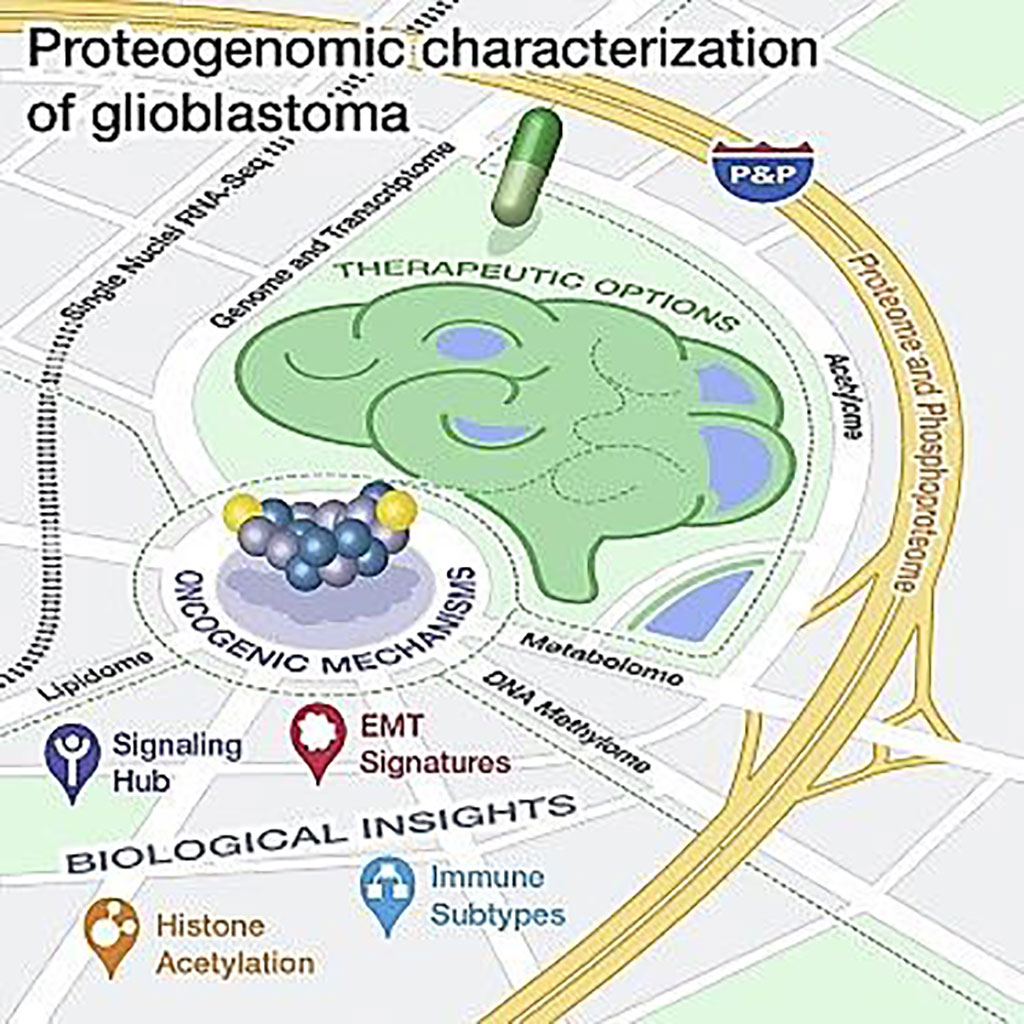Proteogenomic and Metabolomic Studies Characterize Human Glioblastoma
By LabMedica International staff writers
Posted on 23 Feb 2021
Glioblastoma (GBM) is an aggressive type of cancer that can occur in the brain or spinal cord. Glioblastoma forms from cells called astrocytes that support nerve cells. Glioblastoma can occur at any age, but tends to occur more often in older adults. It can cause worsening headaches, nausea, vomiting and seizures.Posted on 23 Feb 2021
The cellular origin of glioblastoma is unknown. Because of the similarities in immunostaining of glial cells and glioblastoma, gliomas such as glioblastoma have long been assumed to originate from glial-type cells. More recent studies suggest that astrocytes, oligodendrocyte progenitor cells, and neural stem cells could all serve as the cell of origin.

Image: Glioblastoma omics highlights informative tumor features, immune subtypes (Photo courtesy of Washington University in St. Louis).
Medical and Genetic Scientists associated with Washington University in St. Louis (St. Louis, MO, USA) used whole-genome sequencing, exome sequencing, RNA sequencing, microRNA-seq, single-nuclei RNA-seq, array-based methylation profiling, mass spectrometry, and other approaches to assess genomic, metabolomic, proteomic, and post-translational modification patterns in 99 untreated GBM tumors and 10 normal, non-matched brain samples.
The findings, pointed to four GBM immune subtypes for the nervous system cancer, including an immune subtype enriched for tumors with IDH mutations. The team identified key phosphorylation events (e.g., phosphorylated PTPN11 and PLCG1) as potential switches mediating oncogenic pathway activation, as well as potential targets for EGFR-, TP53-, and RB1-altered tumors. Immune subtypes with distinct immune cell types were discovered using bulk omics methodologies, validated by snRNA-seq, and correlated with specific expression and histone acetylation patterns. Histone H2B acetylation in classical-like and immune-low GBM is driven largely by bromodomains (BRDs), CREB binding protein (CREBBP), and Histone acetyltransferase p300 (EP300). Integrated metabolomic and proteomic data identified specific lipid distributions across subtypes and distinct global metabolic changes in IDH-mutated tumors.
One of the immune subgroups was marked by a dearth of T cells and high levels of infiltrating macrophage immune cells, for example, while another immune subtype was enriched for T lymphocyte and natural killer cell levels and IDH mutations, but was poor in macrophage-microglia immune cell infiltration. Yet another immune subtype had middling macrophage levels, the team noted, and a fourth immune subtype lacked significant levels of immune cells in general.
The authors concluded that rapid advancement of single-cell genomics and proteomics technologies will facilitate deeper analyses of GBM heterogeneity and tumor microenvironment interactions. They hope these advances will improve patient stratification for clinical trials and lead, ultimately, to personalized treatments. The study was published on February 11, 2021 in the journal Cancer Cell.
Related Links:
Washington University in St. Louis














